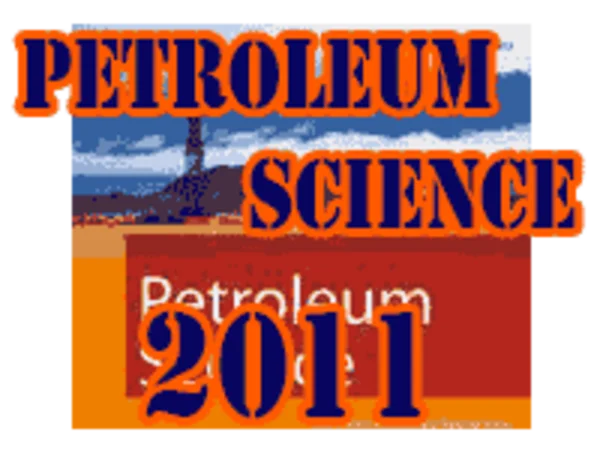-
geochemical evidences of trace metal anomalies for finding hydrocarbon microseepage in the petroliferous regions of the tatipaka and pasarlapudi areas of krishna godavari basin, india
جزئیات بیشتر مقاله- تاریخ ارائه: 1392/07/24
- تاریخ انتشار در تی پی بین: 1392/07/24
- تعداد بازدید: 962
- تعداد پرسش و پاسخ ها: 0
- شماره تماس دبیرخانه رویداد: -
the long-term seepage of hydrocarbons, either as macroseepage or microseepage, can set up near-surface oxidation reduction zones that favor the development of a diverse array of chemical and mineralogical changes. the bacterial oxidation of light hydrocarbons can directly or indirectly bring about significant changes in the values of ph and eh of the surrounding environment, thereby also changing the stability fields of the different mineral species present in that environment. the paper reports the role of hydrocarbon microseepage in surface alterations of trace metal concentrations. in this study trace metal alterations were mapped that appear to be associated with hydrocarbon microseepages in the oil/gas fields. a total of 50 soil samples were collected near oil and gas fields of the tatipaka and pasarlapudi areas of the krishna godavari basin, andhra pradesh. the soil samples were collected from a depth of 2–2.5 m. the paper reports the chemical alterations associated with trace metals in soils that are related to hydrocarbon microseepages above some of the major oil and gas fields of this petroliferous region. trace metals, such as scandium (sc), vanadium (v), chromium (cr), cobalt (co), nickel (ni), copper (cu), zinc (zn), barium (ba) and strontium (sr), in soil samples were analyzed using inductively coupled plasma-mass spectrometry (icp-ms). the concentrations of sc (8 to 40 mg/kg), v (197 to 489 mg/kg), cr (106 to 287 mg/kg), co (31 to 52 mg/kg), ni (65 to 110 mg/kg), cu (88 to 131 mg/kg), zn (88 to 471 mg/kg), ba (263 to 3,091 mg/kg) and sr (119 to 218 mg/kg) were obtained. it was observed that the concentrations of trace elements were tremendously increased when they were compared with their normal concentrations in soils. the analysis of adsorbed soil gas showed the presence of high concentrations of σc2+ (c2h6, c3h8 and n-c4h10) ranging from 7 to 222 μg/kg respectively. integrated studies of trace elements over adsorbed light gaseous hydrocarbons (σc2+) anomalies showed good correlation with the existing oil and gas wells. the carbon isotopic composition of δ13c1 of the samples ranges between −36.6‰ to −22.7‰ (pee dee belemnite) values indicate thermogenic origin, which presents convincing evidence that the adsorbed soil gases collected from these sediments are of catagenetic origin. the increase in the concentrations of trace metals near oil/gas producing areas, suggests a soil chemical change to a reducing environment, presumably due to the influence of hydrocarbon microseepage, which could be applied with other geoscientific data to identify areas of future hydrocarbon exploration in frontier areas.
مقالات جدیدترین رویدادها
-
استفاده از تحلیل اهمیت-عملکرد در ارائه الگوی مدیریت خلاقیت سازمانی و ارائه راهکار جهت بهبود
-
بررسی تاثیر ارزش وجوه نقد مازاد بر ساختار سرمایه شرکت های پذیرفته شده در بورس اوراق بهادار تهران
-
بررسی تأثیر سطح افشای ریسک بر قرارداد بدهی شرکت های پذیرفته شده در بورس اوراق بهادار تهران
-
بررسی تأثیر رتبه بندی اعتباری مبتنی بر مدل امتیاز بازار نوظهور بر نقد شوندگی سهام با تأکید بر خصوصی سازی شرکت ها
-
تأثیر آمیخته بازاریابی پوشاک ایرانی بر تصویر ذهنی مشتری پوشاک ایرانی (هاکوپیان)
-
تحلیل و بررسی شیوه ی اطلاع رسانی نوین در توریسم و گردشگری ایران
-
ارتقا سطح ایمن یترافیک و حمل و نقل از طریق فرهنگ سازی و آموزش رفتارهای ترافیکی به کاربران راهها
-
ژئوشیمی عناصر پلانیتیوم و پالادیوم در پیروکسنیت ها و کرومیت های منطقه فاریاب
-
رابطه سبک های رهبری روسا و مدیران بیمارستان ها با شاخص دهای عملکرد بیمارستان
-
مروری بر راه های موثر در تعیین پاداش هیات مدیره
مقالات جدیدترین ژورنال ها
-
مدیریت و بررسی افسردگی دانش آموزان دختر مقطع متوسطه دوم در دروان کرونا در شهرستان دزفول
-
مدیریت و بررسی خرد سیاسی در اندیشه ی فردوسی در ادب ایران
-
واکاوی و مدیریت توصیفی قلمدان(جاکلیدی)ضریح در موزه آستان قدس رضوی
-
بررسی تاثیر خلاقیت، دانش و انگیزه کارکنان بر پیشنهادات نوآورانه کارکنان ( مورد مطالعه: هتل های 3 و 4 ستاره استان کرمان)
-
بررسی تاثیر کیفیت سیستم های اطلاعاتی بر تصمیم گیری موفق در شرکتهای تولیدی استان اصفهان (مورد مطالعه: مدیران شرکتهای تولیدی استان اصفهان)
-
دین، معنویت و مقابله با سرطان پستان: یک مطالعه ی پدیدارشناسی
-
بررسی تحقق حق الزحمه غیر عادی حسابرسان، چرخش حسابرسان و کیفیت حسابرسی شرکت های پذیرفته شده در بورس اوراق بهادار تهران
-
بررسی شیوع سندرم متقاطع فوقانی در کودکان کم توان ذهنی
-
واکاوی پیامدهای مدگرایی منفی از منظر گزاره های دینی
-
bond between steel reinforcement bars and seawater concrete




سوال خود را در مورد این مقاله مطرح نمایید :